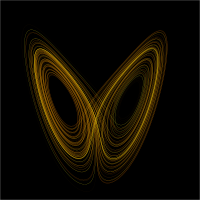
Photo from wikipedia
This work deals with novel triangular and tetrahedral elements for nonlinear elasticity. While it is well-known that linear and quadratic elements perform, respectively, poorly and accurately in this context, their… Click to show full abstract
This work deals with novel triangular and tetrahedral elements for nonlinear elasticity. While it is well-known that linear and quadratic elements perform, respectively, poorly and accurately in this context, their cost is very different. We construct an approximation that falls in-between these two cases, which we refer to as quasi-quadratic. We seek to satisfy the following: (1) absence of locking and pressure oscillations in the incompressible limit, (2) an exact equivalence to quadratic elements on linear problems, and (3) a computational cost comparable to linear elements on nonlinear problems. Our construction is formally based on the Hellinger-Reissner principle, where strains and displacement are interpolated linearly on nested meshes, but it can be recast in a pure displacement form via static condensation. We show that (1) and (2) are fulfilled via numerical studies on a series of benchmarks and analyze the cost of quadrature in order to show (3).
Journal Title: Computational Mechanics
Year Published: 2018
Link to full text (if available)
Share on Social Media: Sign Up to like & get
recommendations!